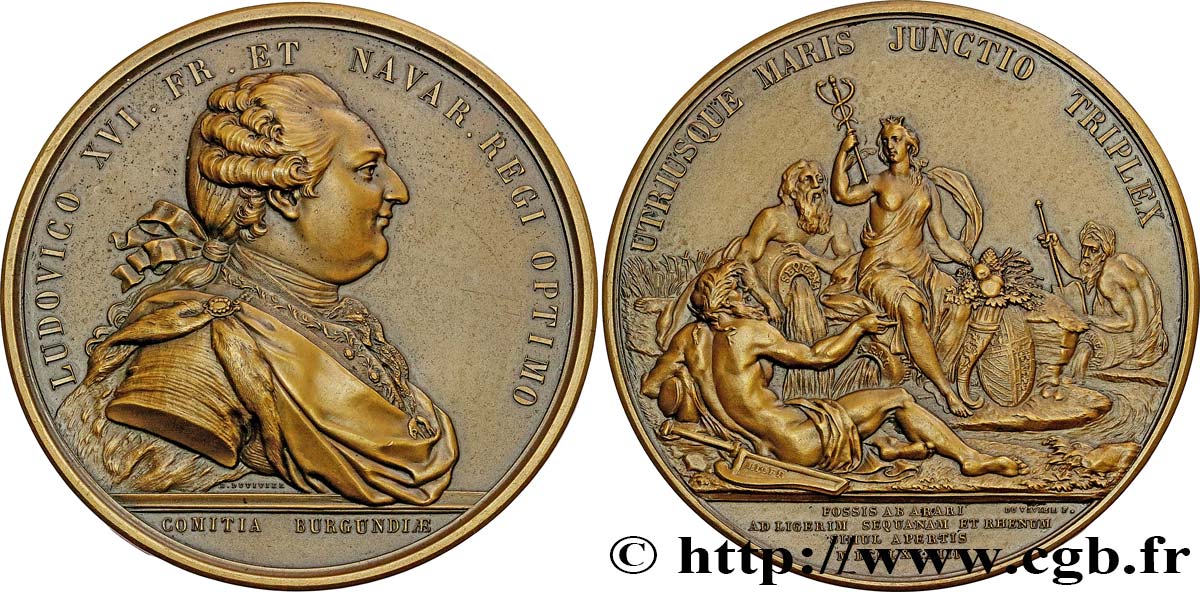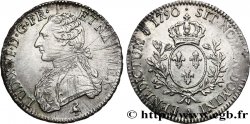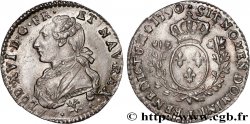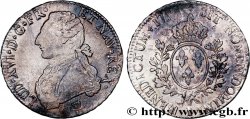fme_704655 - LOUIS XVI Médaille, Canal du Centre, refrappe
100.00 €
Количество
Добавить в корзину

Тип Médaille, Canal du Centre, refrappe
Дата: (1783)
Монетный двор / Город: Monnaie de Paris
Металл: bronze
Диаметр: 74 mm
Ориентация осей монеты: 12 h.
Гравер DUVIVIER Benjamin (1730-1819)
Вес: 173,2 g.
Век: lisse + corne BRONZE
Пуансон: corne BRONZE
Комментарии о состоянии
Patine hétérogène avec des taches noires. Petite usure sur certains reliefs
Лицевая сторона
Аверс: легенда: LUDOVICO XVI. FR. ET NAVAR. REGI OPTIMO // À L’EXERGUE : COMITIA BURGUNDIAE.
Аверс: описание: Buste habillé et drapé de louis XVI à droite. Signé sous le buste : B. DUVIVIER.
Обратная сторона
Реверс: легенда: UTRIUSQUE MARIS JUNCTIO TRIPLEX // À L’EXERGUE : FOSSIS AB ARARI / AD LIGERIM SEQUANAM ET RHENUM / SIMUL APERTIS / MDCCLXXXIII.
Реверс: Описание: La Bourgogne personnifiée assise avec une corne d’abondance et de bouclier à ses pieds, tenant un caducée de la main droite ; autour d’elle les dieux fleuves du Rhin, de la Saône et de la Loire. Signé à l’exergue : DU VIVIER F..
Комментарий
Le canal du Centre relie les vallées de la Loire et de la Saône. Le canal est également connu comme canal du Charolais.
La Dheune, affluent de la Saône, et la Bourbince, affluent de la Loire, ont depuis longtemps (XVe-XVIe siècles) retenu l'attention des ingénieurs par l'orientation de leurs cours qui permettaient d'envisager une liaison entre le sillon rhodanien et la Méditerranée d'une part, et l'Atlantique ou la Manche, la Loire étant elle-même reliée à la Seine depuis 1642 par le canal de Briare. Le projet soutenu par l'ingénieur Thomassin est d'abord en concurrence avec le canal de Bourgogne mais les deux canaux seront finalement réalisés.Le grand artisan du canal du Centre est Émiland Gauthey (1732-1806), ingénieur des États de Bourgogne : son projet élaboré et modifié pendant plusieurs années est approuvé en 1782 par le Parlement de Bourgogne et réalisé de 1784 à 1791/1793 sous son autorité. Appelé à l'origine « canal du Charolais », l'ouvrage, alimenté par les étangs et les divers cours d'eau des bassins versants, comprend un canal latéral à la Bourbince de Digoin à Montceau-les-Mines, un canal à bief de partage de Montceau à Saint-Julien-sur-Dheune, un canal latéral à la Dheune de Saint-Julien à Chagny, un canal de jonction par dérivation de la Dheune vers la Thalie par la tranchée de Chagny à Rully et un canal latéral à la Thalie de Rully à Chalon-sur-Saône. À l'initiative d’Émiland Gauthey, on a préféré le tracé le plus court en ne suivant pas le cours inférieur de la Dheune : celui-ci manquait de profondeur et présentait de grandes variations de débit (sécheresse et inondations) avec de nombreux méandres et parfois plusieurs bras, de plus la rivière n'aboutissait pas à un port.
La Dheune, affluent de la Saône, et la Bourbince, affluent de la Loire, ont depuis longtemps (XVe-XVIe siècles) retenu l'attention des ingénieurs par l'orientation de leurs cours qui permettaient d'envisager une liaison entre le sillon rhodanien et la Méditerranée d'une part, et l'Atlantique ou la Manche, la Loire étant elle-même reliée à la Seine depuis 1642 par le canal de Briare. Le projet soutenu par l'ingénieur Thomassin est d'abord en concurrence avec le canal de Bourgogne mais les deux canaux seront finalement réalisés.Le grand artisan du canal du Centre est Émiland Gauthey (1732-1806), ingénieur des États de Bourgogne : son projet élaboré et modifié pendant plusieurs années est approuvé en 1782 par le Parlement de Bourgogne et réalisé de 1784 à 1791/1793 sous son autorité. Appelé à l'origine « canal du Charolais », l'ouvrage, alimenté par les étangs et les divers cours d'eau des bassins versants, comprend un canal latéral à la Bourbince de Digoin à Montceau-les-Mines, un canal à bief de partage de Montceau à Saint-Julien-sur-Dheune, un canal latéral à la Dheune de Saint-Julien à Chagny, un canal de jonction par dérivation de la Dheune vers la Thalie par la tranchée de Chagny à Rully et un canal latéral à la Thalie de Rully à Chalon-sur-Saône. À l'initiative d’Émiland Gauthey, on a préféré le tracé le plus court en ne suivant pas le cours inférieur de la Dheune : celui-ci manquait de profondeur et présentait de grandes variations de débit (sécheresse et inondations) avec de nombreux méandres et parfois plusieurs bras, de plus la rivière n'aboutissait pas à un port.








 Cообщить об ошибке
Cообщить об ошибке Распечатать страницу
Распечатать страницу Отправить мой выбор
Отправить мой выбор Задать вопрос
Задать вопрос Consign / sell
Consign / sell
 Информация
Информация










